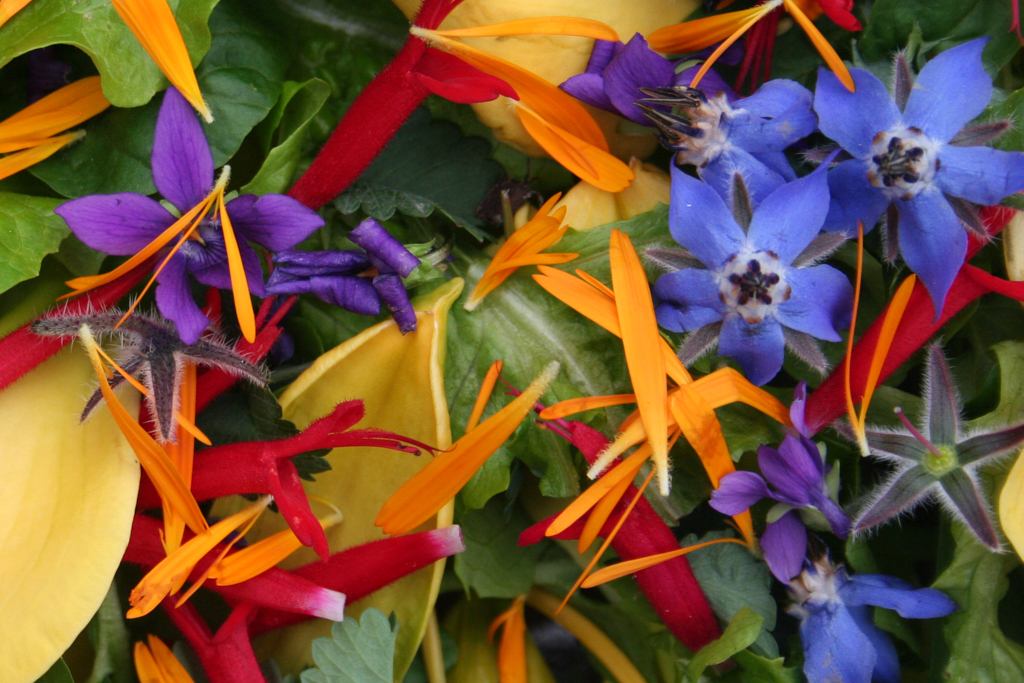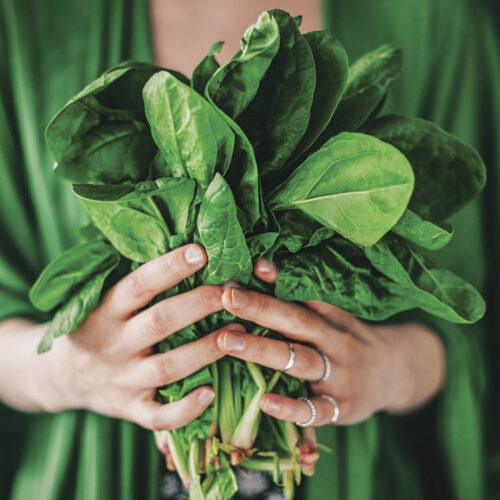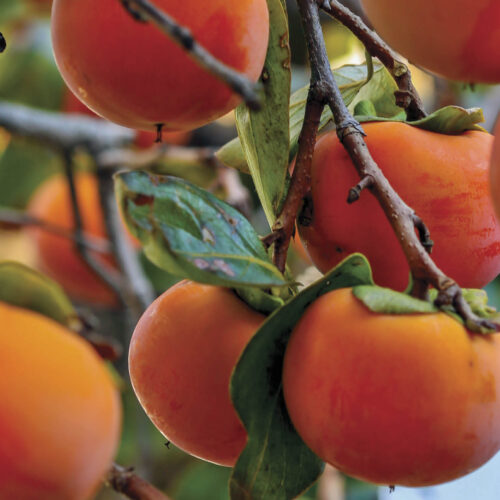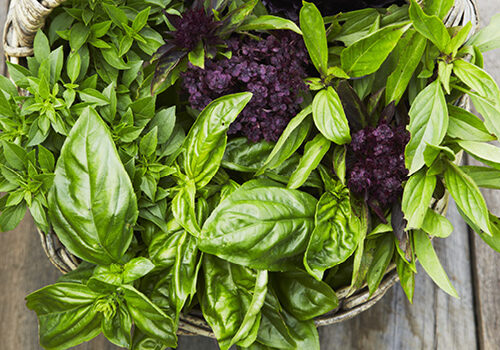Edible flowers
2019-08-15T00:11:22+10:00
Edible flowers add colour and texture to your patch and flavour to your cooking. You can start with borage, marigolds and violets.
Flowers in a garden are always a joy for their many colours and fragrances. But they not only look wonderful, many can also be picked and eaten.
Flowers are fragile and their taste often fleeting but because of cross-pollination from other cultures, we now more commonly see flowers served with a meal and even the salad mixes sold in supermarkets sometimes contain flowers. Edible flowers are not difficult to grow and even flat dwellers can contemplate growing a few in pots or hanging baskets. The ones I use most often in early spring are borage, marigold, nasturtium and violets.
Borage (Borago officinalis) is an annual herb that grows best from seeds planted in spring. It will grow in most soils but plants can be quite big (1m by 1m) so make sure they have plenty of room. The small flowers are vibrant blue and star-like with an initial taste of cucumber and an after taste of oysters. Pulling off the hairy back of the flower makes them more palatable but is not really necessary. These little gems are mainly added to salads and sandwich fillings but also look and taste good in dips and cool summer drinks.
Pot marigolds (Calendula officinalis) are annuals that grow easily from seed sown in spring or summer (or autumn in the subtropics) into any reasonable soil. Once established they will self sow around the garden. Again the whole plant is edible with the leaves being added to salads and the flowers having medicinal uses as well as being edible with a sweet slightly salty flavour. Pull the petals from the flower head before using and then sprinkle into salads, add to sandwich fillings or stir through rice to add flavour and colour.
Nasturtiums (Tropaeolum majus) are vigorous trailing annuals that die in very cold and very hot weather, but re-grow from seed once the weather suits them again. The whole plant can be eaten and has a sharp, peppery flavour. The flowers, which come in vibrant reds, oranges and yellows, are still peppery but not as strong as the leaves, and have sweet, nectary overtones. When you pick the flowers, always give them a good shake to dislodge any earwigs hiding in the spur or you might end up with more protein in the salad than you expected!
Violets (Viola odorata) are tough perennial plants that do well in any soil, especially under deciduous trees where they get summer shade and winter sun. Like roses, the sweet flavour of the flower lends itself to sweet dishes, although they can also be added to salads, sprinkled over an omelette or stirred though rice just before serving. Violet flowers hold their scent well when dried and can be added to a jar of castor sugar. This sugar is then used to make cakes and biscuits that will have a subtle violet scent. There’s also a native violet you can grow in your garden.
How to use edible flowers
Pick flowers either in the cool of the morning, and keep in a container in the refrigerator; or at the last possible moment, because they wilt and shrivel rapidly in hot weather. If you want to dry the flowers then choose a dry day and pick them just after the dew has dried. Select those that have just opened. Spread the flowers out over sheets of paper, pulling the petals from larger flower heads, leaving plenty of room between each bloom to allow for good air circulation. Use a shady position away from direct light and strong breezes. At least once a day, shake or stir the flowers around, until they are completely dry and brittle to the touch. Remove all stems, leaves and green bits. Label, date and store in jars away from direct light.
All through the year there are edible flowers that can be picked and added to your favourite dishes to bring joy and delight to your family and friends. But always keep in mind that some flowers are poisonous. If you are in any doubt about whether a flower is edible or not, then don’t eat it.






